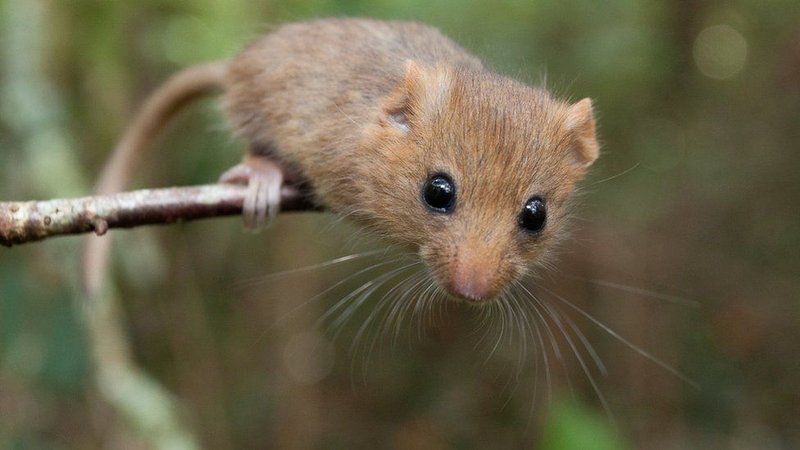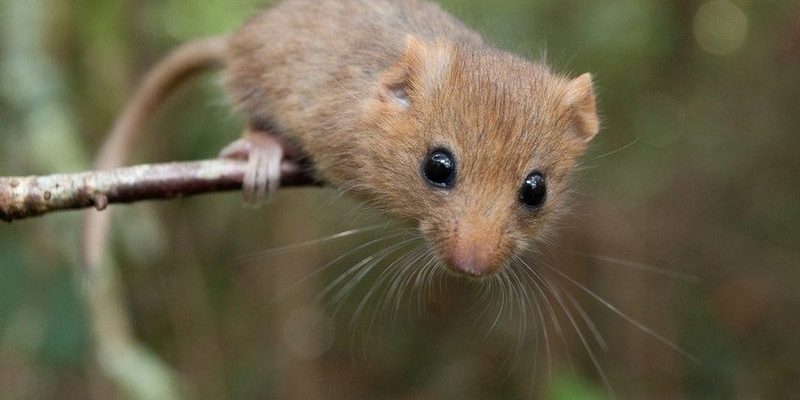
The dormouse is one of those creatures that evokes a sense of whimsy and curiosity. With its twitchy nose and fluffy tail, it’s like a little ball of energy wrapped in fur. Picture a tiny animal that seems to float in and out of slumber, often seeking the comfort of napping over foraging. Dormice are small rodents belonging to the family Gliridae, and they are mostly found in Europe and parts of Asia. While they might not be as well-known as other small mammals, they are fascinating in their behavior and lifestyle—so let’s dive in!
You might be wondering what makes dormice so special. Well, these little guys have distinct traits and habits that set them apart from other small mammals. From their wide-eyed appearance to their notable hibernation habits, dormice capture our imagination and remind us of nature’s quirky designs. They offer an incredible glimpse into the diversity of mammalian life and how different species adapt to their environments.
Physical Characteristics of Dormice
Dormouse species typically have a round body, large eyes, and a bushy tail. Their size varies depending on the species, but they generally range from about 5 to 7 inches in length, excluding the tail. One standout feature is their fur, which can range from soft browns to grays, providing them excellent camouflage in their natural habitats. This coloring isn’t just for show; it’s a clever survival tactic that helps them evade predators.
Their large eyes are adapted for night vision, as most dormice are nocturnal. This means they’re more active during the night when they venture out to gather food and explore their surroundings. It’s like they have their own little nightlife, attending parties in the moonlight while the world sleeps. Their keen sense of smell also plays a critical role in their foraging activities, helping them locate food sources without relying too heavily on sight.
Habitats of the Dormouse
Dormice prefer deciduous and mixed woodlands, although they can also thrive in hedgerows, shrublands, and even gardens. They often make their nests in tree holes or dense shrubs, using leaves, moss, and grass to create a cozy space. This choice of habitat not only provides protection from predators but also offers abundant food sources.
Interestingly, different species of dormice have adapted to various habitats. For instance, the European dormouse is often found in areas rich in hazel trees, where they can feast on nuts. In contrast, the striped dormouse prefers more arid climates, showcasing the impressive adaptability of these creatures. So, whether they’re lounging in a leafy tree or scurrying through underbrush, dormice have a knack for finding comfort in diverse settings.
Diet and Feeding Habits
Dormice are omnivorous, which means they enjoy a diet that includes both plant-based and animal-based foods. However, they have a penchant for sweet treats, often indulging in fruits, nuts, and seeds. You can think of them as nature’s little snackers, foraging for food like a kid searching for candy. In addition to fruits and nuts, they may also munch on insects and other small invertebrates, making them flexible eaters.
During the warmer months, dormice store fat to prepare for winter, a season where food becomes scarce. This is when you’ll find them hoarding their favorite items, hiding them in tree hollows or beneath fallen leaves to ensure they have enough sustenance during hibernation. It’s a smart strategy you might draw parallels to—think of it as setting aside snacks before a long movie marathon!
| Characteristic | Details |
| Size | 5 to 7 inches (excluding tail) |
| Weight | 60 to 120 grams |
| Diet | Fruits, nuts, seeds, insects |
| Habitat | Deciduous woodlands, gardens, shrublands |
| Lifespan | Up to 5 years in the wild |
| Activity | Nocturnal |
| Hibernation | Yes, typically from late autumn to spring |
Reproduction and Lifespan
Dormice have a relatively short lifespan, averaging around 3 to 5 years in the wild. However, some individuals have been known to live longer in captivity, where the risks of predation and environmental stresses are minimized. When it comes to reproduction, these critters tend to mate in late spring to early summer. During this period, females can give birth to up to six young after a gestation period of about three weeks.
Newborn dormice, called pups, are born blind and hairless, relying entirely on their mother for warmth and nourishment. As they grow, they start to develop fur and open their eyes, becoming increasingly independent. The bonds between mother and pups are strong, and they remain together until the pups are ready to venture out on their own.
Hibernation Patterns of the Dormouse
One of the most intriguing aspects of dormice is their hibernation behavior. As the temperatures drop and food becomes scarce, dormice enter a state of hibernation, which can last for several months. During this time, their metabolic rate decreases significantly, enabling them to conserve energy. Imagine a mini bear, all cozy and bundled up for a long winter nap. It’s a remarkable survival strategy that helps them weather the harsh conditions.
Before hibernation, dormice prepare by filling up on food to build fat reserves. They find snug spots in tree hollows or underground burrows where they can sleep safely. While hibernating, their body temperature drops, and they may enter a state that resembles torpor, nearly shutting down to preserve energy. When spring arrives, they awaken, ready to forage for food once again. This fascinating cycle reflects the incredible adaptability of dormice to changing environments.
Conservation Status and Threats
Despite their charming appearance, some dormouse species are facing threats due to habitat loss and environmental changes. Agricultural practices and urbanization have led to a decline in suitable habitats, putting pressure on their populations. Additionally, some dormice are vulnerable to predators such as owls and foxes, which can further affect their survival rates.
Conservation efforts are underway to protect these lovely creatures and their habitats. Various organizations are working to educate the public about dormice and promote sustainable practices to preserve their environments. Community involvement also plays a crucial role—by planting native trees and maintaining green spaces, we can all contribute to the survival of dormice and many other small wildlife species.
Unique Characteristics of Different Dormouse Species
Did you know that there are over 30 species of dormice? Each has a unique twist on the standard dormouse traits. For instance, the European dormouse, known for its golden-brown fur, is often more social than its relatives. On the other hand, the hazel dormouse has a reputation for being shy and elusive, living mainly in trees and feeding on hazelnuts and fruits.
Then there’s the fat dormouse, which, true to its name, has a more rounded body and a thicker tail. It relies heavily on a diet of nuts and fruits—hence the need for its ample fat reserves. Different species also exhibit varying degrees of hibernation. While most hibernate, some might enter a lighter state of torpor instead, showing how diverse their adaptations can be.
How to Spot a Dormouse in the Wild
If you’re eager to catch a glimpse of these adorable critters, there are a few things to keep in mind. First, look for their preferred habitats: dense woodlands and areas rich in vegetation are prime spots. Late spring and summer evenings are the best times for spotting dormice, as they are most active during the twilight hours. You might notice them foraging on the ground or climbing trees in search of food.
Be quiet and patient—these little guys are quite timid and will scurry away quickly if they sense danger. If you’re keen on observing them without disrupting their environment, consider setting up a small wildlife camera to capture their antics. Trust me; watching a dormouse can be enchanting, like peeking into a hidden world of nature.
Dormice may be small, but they are a delightful part of our natural world, with their unique traits, engaging habits, and fascinating lifestyles. From hibernation to foraging, they offer valuable insights into how animals adapt to their environments. By learning about dormice, we can appreciate the intricate web of life that surrounds us and the importance of preserving it. So, the next time you’re wandering through a woodland or enjoying a garden, take a moment to appreciate these charming little creatures and their remarkable existence.
FAQ
What do dormice eat during winter?
During winter, dormice rely on the fat reserves they’ve built up during the warmer months. They don’t actively forage during hibernation, as they enter a state of deep sleep. When they awaken in spring, they start searching for fresh food like new leaves, flowers, and fruits to replenish their energy.
How can I attract dormice to my garden?
To attract dormice to your garden, consider planting native trees and shrubs that provide food sources such as hazelnuts and berries. Creating dense shrubs or hedgerows offers shelter for them. Avoid using pesticides, as these can harm dormice and reduce their food supply.
Are dormice social animals?
Some dormice species can be social, while others prefer solitude. The European dormouse is one of the more social species, often found in nests near others during mating season. However, the hazel dormouse tends to be more solitary, spending most of its time alone in tree canopies.
How long do dormice hibernate?
Dormice typically hibernate for several months, from late autumn until spring. The exact duration may depend on environmental factors such as temperature and food availability. They can enter a state of torpor during this time, reducing their metabolic rate to conserve energy.
What threats do dormice face today?
Dormice face several threats, including habitat loss due to agriculture and urbanization, as well as predation from animals like owls and foxes. Climate change also poses a challenge, impacting their food sources and hibernation patterns.
Can dormice be kept as pets?
While dormice can be kept as pets, they require specific care and conditions to thrive. They need a spacious enclosure with plenty of enrichment, as well as a proper diet. Additionally, prospective owners should be aware of specific regulations regarding keeping wild animals.
Where can I find dormice in the wild?
Dormice can be found in deciduous woodlands, hedgerows, and shrublands across Europe and parts of Asia. If you want to see them in the wild, consider visiting nature reserves or parks known for their diverse fauna during the late spring or summer evenings.
What is the scientific classification of dormice?
Dormice belong to the family Gliridae within the order Rodentia. The genus includes multiple species, with Glirulus and Muscardinus being among the more recognizable. Each dormouse species has its unique behaviors and adaptations that make them fascinating subjects for study.
Do dormice communicate with each other?
Yes, dormice do communicate, primarily through vocalizations and scent markings. They may use different sounds to signal alarm or attract mates. Scent marking is also significant, helping them establish territories and share information about food sources.
How fast can dormice move?
Dormice are not known for their speed, but they are agile climbers and can move quickly when necessary. In the wild, they typically move around cautiously to avoid predators, but when they feel safe, they can dart quickly over short distances.
What adaptations help dormice survive in the wild?
Dormice have several adaptations that aid their survival. Their nocturnal habits allow them to avoid daytime predators, while their camouflage helps them blend into their environment. Additionally, their ability to store fat for hibernation ensures they can survive during the cold months when food is scarce.
Are dormice endangered?
Some species of dormice are considered endangered due to habitat loss and other environmental pressures. For example, the hazel dormouse has faced population declines in certain areas, leading to conservation efforts aimed at protecting their habitats and ensuring their survival.

